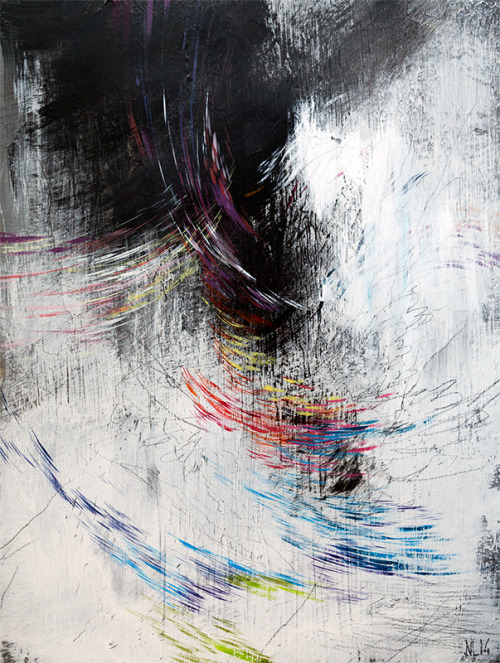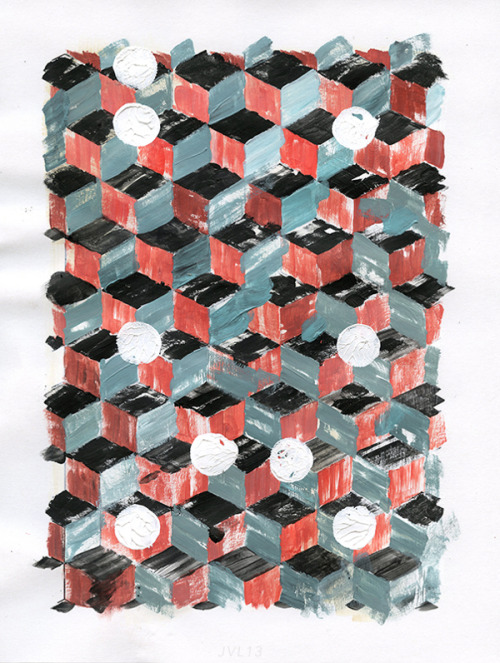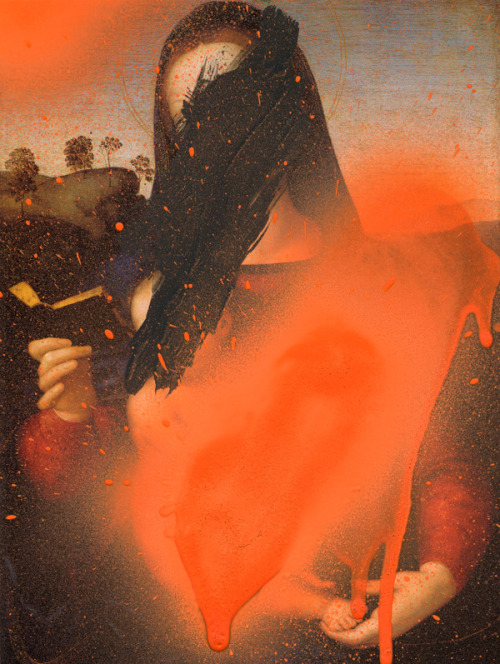Art Writer’s Wednesday 22 - Artists on Tumblr
Jacob van Loon (on Tumblr) & Chad Wys (on Tumblr)
A Discussion between artists Part IIChad Wys: I never went through the rigors of a studio art curriculum in college. I know you earned a BFA in illustration at Northern Illinois University and I’m curious, how did you deal with institutional criticism? We all certainly face evaluation in college, but I can’t imagine what it would be like to submit my art—such subjective content to begin with, and content I feel very passionately about—to an ostensibly “objective” academic critique. Can you describe the influence of your education on your artwork and your ideas?
Jacob van Loon: Look out the window—you’ll see an array of devices we use to try and control or rationalize nature… Houses, cars, gutters, sewers, roads, whatever. We are sensitive to any change that is natural and we focus on them as disruptions. When it rains, you use an umbrella if you need to walk outside, that sort of thing. I think criticism is often (wrongly) viewed as a disruption. To be criticized is natural, because we are all critically aware. To be unwilling to hear criticism says something about the level of denial the artist works with, and how false their work is as a result.
I meandered through my undergraduate degree and went to a few different schools, and got great criticism from a lot of my teachers and some of my peers. Some of the most useful criticism comes from what might be considered the untrained eye. What role did your education serve in your development as a visual artist?
CW: I studied art history and art theory which has come to serve as the foundation, and in many ways the framework, for my visual art. In this way, I’m sort of an “outsider” artist with a developed view of the inside; like a movie critic who started making his own movies.
But to your point about critique: I think critique does “disrupt” to an extent, or if not disrupt then it produces quite a lot of influence, and how that influence is conveyed and how it is received determines the effectiveness of the critique (does the subject learn and grow/double down?). Critique of one’s art provides a lot of self-disillusionment which can be quite necessary in general, and it invariably alters one’s trajectory for better or worse (in college, I imagine it’s often for the better).
For the most part institutional critique seems to be tethered to the zeitgeist and that presents a host of concerns for me. We’ve seen perceptions shift over time and we often reevaluate critics of the past, blaming them for only observing part of the picture (pun intended); like Clement Greenberg, for example, who championed modernist parameters for considering art, insisting that the formal elements of the artwork and the “artist’s vision” are of primary importance. Since then we’ve evolved to regard art as occupying many intellectual and physical territories, often at once. I guess I just don’t know how a “wrong” or “correct” artwork looks. I’d be an awful professor and I think possibly an awful art student!
JVL: I had a teacher take me down an entire letter grade mainly because that person felt I was too confrontational in their class. I quickly resigned to a few things: Art instructors are subject to the same personal whims as anyone else in or outside of a professional position, that I can respect most of my instructors as peers with a different set of knowledge than mine, and that this particular instructor was an insufferable shithead who had no place teaching anybody anything (and surprise, no longer does). I guess being trained as an illustrator best suited me to engage different audiences in the best possible way when explaining my work, but sometimes you end up screaming at a wall—something I’d wager you’re familiar with given your background, profession, and aesthetic.
CW: I’ve screamed at many a wall! But I think you and I have been fortunate, as many students have, in that our experiences at university have been largely positive (with the odd exception: I’m looking at you Baroque class!). The task of any student is surely as much about fleshing out a professor’s idiosyncrasies as it is learning facts and techniques. I think what we do with that information then becomes our way of personalizing who we are.
In terms of looking directly at your recent work, I see a progression from a kind of aestheticist to—I imagine—a historical critic. That is to say, I certainly see you drawing out and conflating techniques into self-aware pieces that seem to underscore the variety of their own construction—from design to illustration, and from painting to photography. Along these lines, how does graphic design influence your craft as an artist? Inversely, how does (fine) art influence your craft as a graphic designer?
JVL: Peripherally, without being an expert, I am critical of history in general. How it’s documented, who documents it, and how it’s selectively maintained. How I approach that criticism in my work and how I decide what execution best suits the criticism is still a little unclear to me. I love design because I respond to it naturally. My favorite times in history are when design and art were taught as the same device, and my favorite kind of art is anything conscious of good design. I think academics, especially state institutions, spend way too much time building their curriculum around the pigheaded idea that art and design should be separate practices. For what reason should they be separate? Professionally, in the real world, different design studios and companies with design departments exist for different purposes on a sliding scale of utilitarianism. All I know is that I can’t seem to land a job at any of them.
Jacob van Loon, Sleeper II. Acrylic and graphite on panel, 18x24x2” (2014)
Jacob van Loon, Trade Winds, White Heat. Collage, acrylic, oil, 9x12” (2012)
Jacob van Loon, Interior graphic illustration for Anobium: Rescription Project. Mixed media (2013)
-
Chad Wys, Greased Pig. Paint on found print, 7.75”x6” (2012)
Chad Wys, Castrophpia. Paint on laser print, 10.5”x8” (2012)
Chad Wys, Arrangement In Skintones 11. c-print, 30”x30” (2011)[more Jacob van Loon & Chad Wys | art discussion hosted by Artchipel]
(via darksilenceinsuburbia)














Find me on